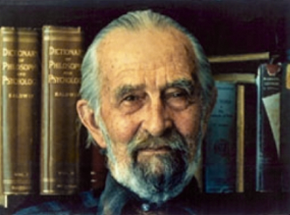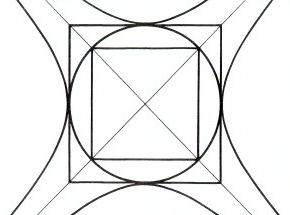Glossary
Ashram (Skr.)
A place of religious retreat.
Atman (Skr.)
The Self or Pure Subject, the true referent of the term I, which cannot be an object. Thus it is Transsubjective, and may be symbolized by a circle whose center is everywhere, and whose circumference is nowhere. Atman is Realized as none other than Brahman, or Ultimate Reality.
Consciousness (Lat.)
Etymologically, “to know with.” The state of being aware…which is the state the reader in now. Although sometimes used in the psychological sense to mean self-conscious (consciousness of being conscious), it is best not to conflate these meanings.
Epistemology (Gk.)
The study of the origin, foundations, limits and validity of knowledge.
Great Space
A symbol for the nondualistic state of consciousness known as rig-pa, or Primordial Awareness.
High Indifference
The supernal state of consciousness in equipoise between all pairs of opposites, which may be suggested by the term Equilibrium. Franklin uses this term in relation to his second Fundamental Realization, but it more strictly characterizes the preliminary stage of Satisfaction and the subsequent dissolution into Consciousness-without-an-Object and without-a-Subject.
Imperience
Franklin’s term for the immediate nonperceptual, nonconceptual content of nonrelative consciousness, in contrast to the experience of relative consciousness.
Introception
Mystical insight; knowledge-through-identity; a third way of knowledge, other than sense perception or conceptual cognition, resulting from the precipitation from Mystical Realization through the noetic function of relative consciousness. Introceptualism is the term derived from it for Franklin Merrell-Wolff’s philosophy.
Liberation
A common goal of all spiritual paths, whether by the name of Moksha, Salvation, Nirvana, etc., which is experienced as Freedom from bondage to the world of objects taken as real.
Logic
The science of correct reasoning.
Mandala (Skr.)
A unique (quasi-)symmetrical archetypal symbol of wholeness, generally having a concentric, counterbalanced geometric form, generated by an individual consciousness, that may be used for purposes of concentration or contemplation. [Note: It is a defect of Western culture that this term does not appear in either Webster’s or the OED, for it has become a common English word.]
Metaphysics
Inquiry into the ultimate nature of being or Reality.
Mysticism
A path of direct Realization of Ultimate Reality, independent of how one conceives it. The goal is beyond all form, hence beyond description, thought or causality.
Myth
A symbolic story that reveals the elements and dynamics of our psychological unconscious, as expressed by a particular group at a particular time.
Nirvana (Skr.)
The blissful extinction of the way of consciousness that regards objects as real and is attached to them; it results in Liberation, or the permanent cessation of suffering.
Noetic (Gk.)
Taken from the term nous (mind). Direct intellectual apprehension.
Phenomenon (Gk.)
That which appears (prior to any ontological or metaphysical attribution). The plural form of the term is phenomena.
Pointer Concept (A term invented by Franklin Merrell-Wolff)
A familiar conceptual term used in an extended, symbolic sense.
Primordial Awareness
The ineffable nondualistic Consciousness that is none other than Ultimate Reality.
Realization
Awakening to Transcendent Consciousness that has the sense of becoming aware of what is already nonphenomenally There. This is synonymous with Recognition.
Religion (Lat.)
Etymologically, “to bind back, or to bind fast.” A system of doctrines and practices that is designed to serve to reconnect an individual to a Transcendent Source.
Rig-pa (Tib.)
The nonphenomenal, nondualistic state of Primordial Consciousness, or Primordial Awareness, that is none other than Ultimate Reality.
Samsara (Skr.)
The “cycle of existence”; the domain where objects are taken to have independent existence.
Sangha (Skr.)
Originally, a monastic order, but, more generally, a spiritual community.
Self
Soul or psyche; in the Transcendent sense, the Pure Self is the Pure Subject or Atman, the referent of the term I, which is none other than Brahman or Ultimate Reality.
Shunyata (Skr.)
From Shunya (See Voidness)
Substance (Lat.)
Etymologically, “to stand under.” Derived from the Greek, it is ambiguous, referring both to the the individual thing that changes (hypokeimenon) and its essence (ousia). It is best thought of as the unchanging substratum that constitutes the reality of a thing, underlying its phenomenal properties.
Symbol (Gk.)
Although most symbols are signs, religious symbols are sensuous (or conceptual) representations of a Transcendent Reality, and are not translatable into descriptive language.
Transcendent (Lat.)
Going beyond experience, in the sense of consciousness subject to the forms of space, time and causality. Mystical Realization is Transcendent insofar as these terms do not apply to it—indeed, no term whatsoever strictly applies to it, as it is ineffable.
Voidness
The Emptiness of phenomena, that is, lacking inherent existence. To relative consciousness, this seems to be none other than a Void, but to Absolute Consciousness it is Fullness.1


